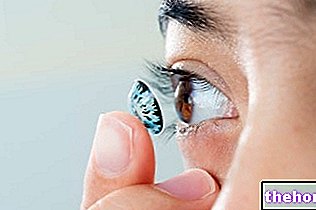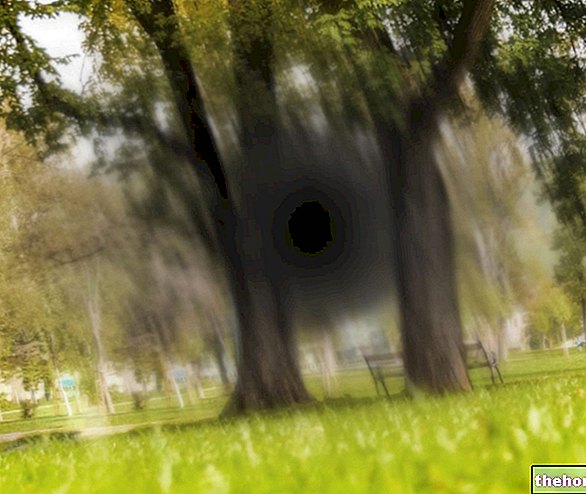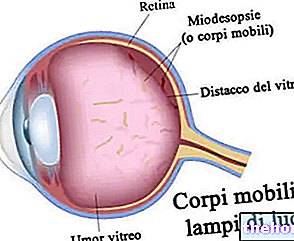What is Nystagmus?
Nystagmus is a condition characterized by the rapid and repetitive involuntary movement of the eyes. The disorder is mainly caused by a dysfunction of the areas of the brain that control eye movements.

The nystagmus movement goes from side to side, but the eyeballs can also swing up and down or in a circular fashion. Nystagmus can be caused by numerous causes: congenital, idiopathic or secondary to a pre-existing neurological, vestibular or visual disorder. Involuntary eye movement can also be induced by temporary disorientation or the effect of certain antidepressant or antiepileptic drugs, alcohol and drugs.
Depending on the cause, nystagmus can affect one or both eyes. Often, those affected are unaware of their eye movements, but vision can be impaired depending on the severity of the disorder.
Types of nystagmus
It is possible to distinguish numerous types of nystagmus, classified according to the characteristics with which the disorder occurs; some of these are:
- Pathological nystagmus. Pathological nystagmus is typically divided into congenital and acquired.
- Congenital nystagmus. Congenital (or early-onset) nystagmus is present at birth and occurs in the first few months of life, usually between six weeks and three months of age. Children with nystagmus generally see similarly to others their age. The condition is mild and non-progressive. Congenital nystagmus does not require treatment, although corrective lenses and refractive surgery can help reduce the visual difficulties encountered.
- Acquired nystagmus. The disorder can also develop later in life (acquired nystagmus), as a result of serious health conditions and for a variety of other causes. Unlike congenital nystagmus, adults often report an unstable and oscillating perception of the visual field (oscillopsia). In acquired cases, treatment will focus on the underlying cause.
- Physiological nystagmus. Physiological nystagmus is a form of involuntary eye movement evoked in a healthy person as part of the vestibulo-ocular reflex, which stabilizes images on the retina during rapid head movement. This can be further divided into optokinetic nystagmus (depending on the eye), vestibular (relating to the inner ear, which manages balance) and dissociated (concomitant movements of the two eyes, but with different amplitudes). The optokinetic nystagmus is evident, for example, when looking at an object through a car or train window.
Causes
The direct cause of the disorder is the instability of the system that controls the movement of the eyes (central nervous systems, ocular or vestibular). The eyeballs move instinctively when the head moves; this allows to stabilize the image that is focusing and allows you to see a clearer picture. In people with nystagmus, the areas of the brain that control eye movements do not function normally. In addition, the disorder can be caused by pathological events affecting the labyrinth, the part of the inner ear that allows you to perceive movement and spatial positioning.
In early childhood, nystagmus can be caused by an eye problem or a dysfunction in the visual path from the eye to the brain. In other cases, the disorder can be found in association with a wide range of eye conditions, such as cataracts of the lens), strabismus (misalignment of the eyes), glaucoma, albinism and some conditions of the retina.
Nystagmus can also be a clinical sign of congenital diseases that cause multiple disabilities, such as Down syndrome. Acquired nystagmus, which develops over the course of life, can instead be associated with other eye diseases, serious medical conditions (multiple sclerosis, head trauma, etc.) or the use of certain drugs, including sedatives and antiepileptics (such as phenytoin). Stroke is a common cause of acquired nystagmus in older people.
Known causes of nystagmus include:
- Genetic inheritance: nystagmus can be inherited and a positive family history increases the risk of developing the disease; dominant, recessive and X-linked inheritance patterns have been reported. The severity of nystagmus often varies among members of an affected family;
- Poor development of eye control: it can be caused by an eye disease or visual problem that arises during childhood, such as bilateral optic nerve hypoplasia or congenital cataract;
- Albinism (lack of skin pigmentation);
- Eye diseases: cataracts, amblyopia, strabismus, degeneration of the optic nerve, coloboma and severe refractive errors (astigmatism or myopia) etc .;
- Pathologies of the inner ear (vestibular apparatus): infections, benign paroxysmal positional vertigo, inflammation, etc .;
- Some brain tumors (rare cause of acquired nystagmus);
- Central nervous system diseases and pathological conditions (presenting nystagmus as a clinical sign): Ménière syndrome (involves balance problems), optic nerve hypoplasia, Leber's congenital amaurosis, multiple sclerosis, Down syndrome or stroke;
- Head trauma: common cause of acquired nystagmus in younger people;
- Certain medications (anticonvulsants or sedatives, benzodiazepines, and lithium-based drugs);
- Alcohol or drug abuse;
Some patients with nystagmus do not have eye, brain, or other health problems. In these cases, the condition is called "idiopathic nystagmus," meaning the cause of the disorder is unknown.
Symptoms
The main symptom of nystagmus is the involuntary movement of one or both eyes. Usually, the trajectory goes from side to side (horizontal nystagmus), but it can also be from top to bottom (vertical nystagmus) or circular (rotational nystagmus). The cadenced rhythm of eye movements can be further divided into slow and fast sequences. The slow phase is typically induced physiologically or pathologically by a vestibular stimulus; the rapid phase is instead a movement induced by the oculomotor system, which controls the movements of the eyes. For those born with this condition (congenital nystagmus), the symptoms are usually mild.
In addition to the movement of the eyeballs, symptoms of nystagmus can include:
- Sensitivity to light;
- Vertigo and loss of balance
- Difficulty seeing in the dark
- Vision problems;
- Abnormal Head Position: Some people experience reduced eye movement if they maintain certain head positions;
- Oscillopsia: unstable and oscillating perception of the visual field.
The severity of the nystagmus can vary according to the direction of the gaze, in other words the eyes swing more when they try to focus images that are in certain positions (for example: peripheral or moving). To compensate for vision difficulties, it is common for people with nystagmus to tilt or turn their heads to reach "zero point". In this position, eye movement is reduced or slowed and vision is improved, but it is also accompanied by severe muscle pain in the neck (eye stiff neck) and shoulders.























-nelle-carni-di-maiale.jpg)




